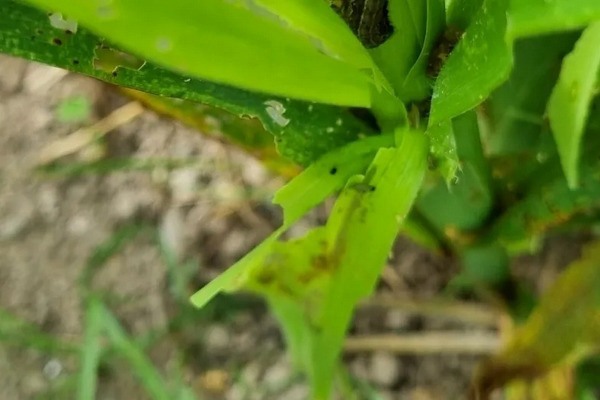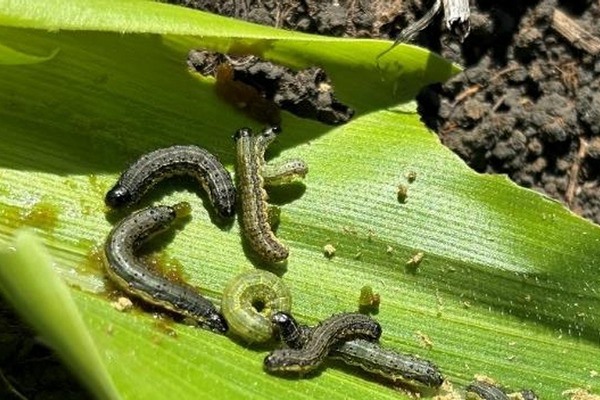Confirmed sightings of the fall armyworm (FAW, Spodoptera frugiperda) have been reported across various locales in Northland. It is advised to seek guidance from your regional agronomist, as their expertise is crucial for effective pest management. Image (L). In the 2024/25 season, fall armyworm larvae were discovered within the whorls of a maize silage crop, currently in its early whorl phase. The infestation levels are approximated at 1% throughout the field. The farmer, having dealt with FAW in past seasons, opts for vigilant monitoring, reserving action for any potential increase in infestation.

- Key points:
Present Situation: Numerous verified instances of fall armyworm presence throughout the Far North have been reported. For assistance, reaching out to your local agronomist is recommended, as their local insight is instrumental in managing the situation effectively. - Crop Surveillance: Regularly inspect your crops to keep track of any existing or new FAW damage, especially in areas not previously identified with FAW presence this season.
- Natural Predation: The natural predators such as Cotesia ruficrus, spiders, and other beneficial organisms continue to play a significant role in controlling FAW numbers. These predators are found across New Zealand.
- Additional Maize Pests: Significant damage across the North Island is attributed to the cutworm (Agrotis ipsilon), with numerous fields needing replanting. The cosmopolitan armyworm (Mythimna separata) and some early sightings of corn earworm (Helicoverpa armigera) have also been documented.
- Pest Identification: For assistance with identifying pest damage or larvae, please contact your agronomist, utilize resources available on the FAR website, or get in touch directly for support.
Regional summary for the 2024/25 Season:
Northland: This week has seen several new detections of larvae, with most FAW populations being small and localized, mainly consisting of early neonate larvae. However, one significant infestation at the late instar stage has been identified. Effective management of this pest can be achieved through communication and collaboration with neighboring maize and sweetcorn growers, as well as consulting with advisors.
Auckland and Waikato: To date, there have been no FAW detections this season within this region. Last year, FAW activity was predominantly noted in the Auckland area and the northernmost parts of Waikato, with no significant activity in central Waikato. Continuous scouting is essential for early detection and management.
Bay of Plenty: No FAW detections have been reported this season. Last year, FAW was mainly observed along the coastal regions. It is crucial to remain vigilant, particularly in fields adjacent to areas impacted last season. Early maize planting could mitigate potential FAW damage.

Gisborne: There have been no FAW detections this season. Despite Gisborne having recorded only a few instances of FAW last season, its closeness to other impacted regions warrants ongoing vigilance. Emphasis should be placed on scouting, especially for any larval presence in new crops.
To view the full report, click here.
For more information:
Ash Mills
Foundation for Arable Research
Tel: +64 3 345 5783
Email: [email protected]
www.far.org.nz
